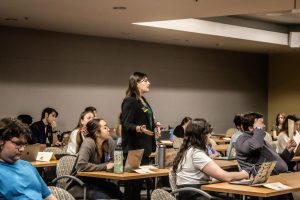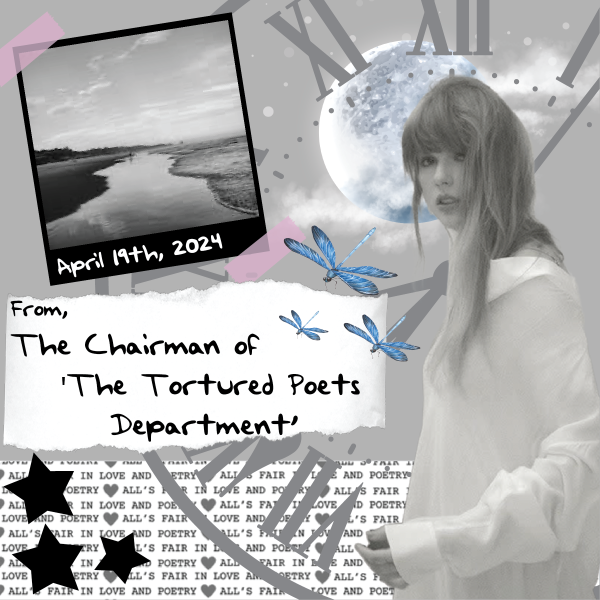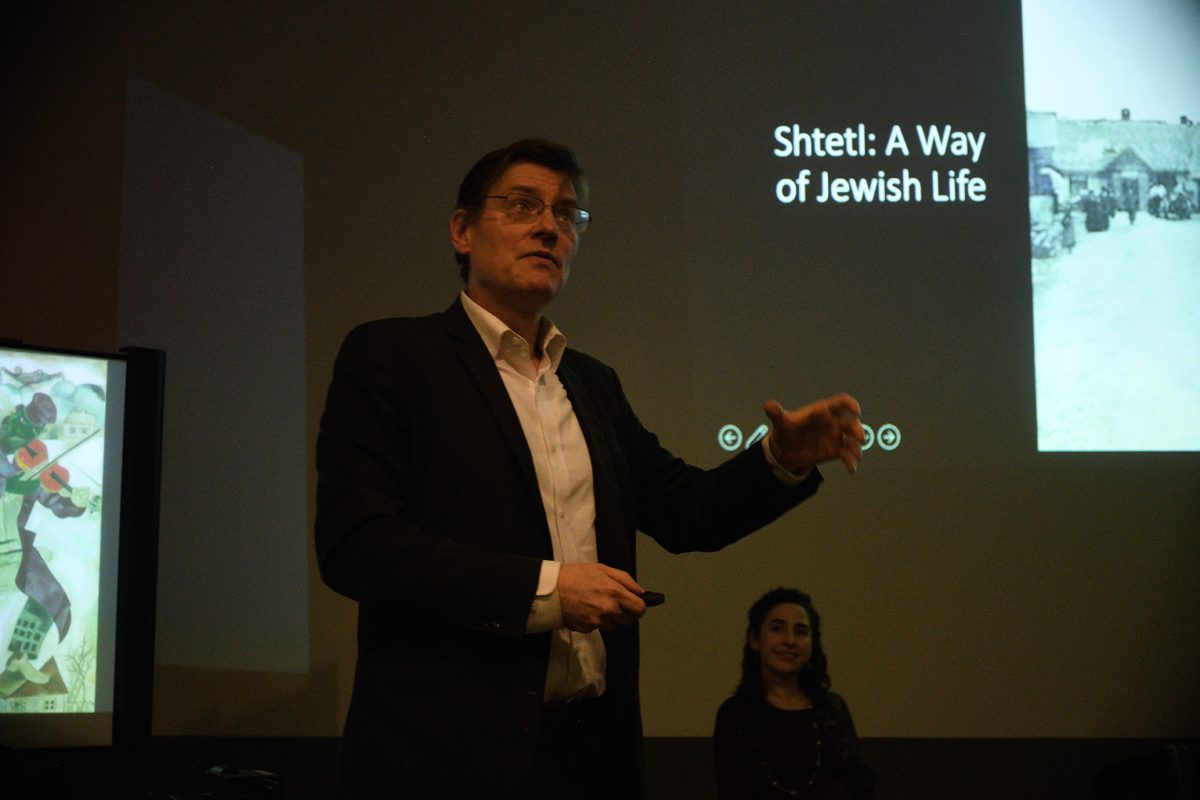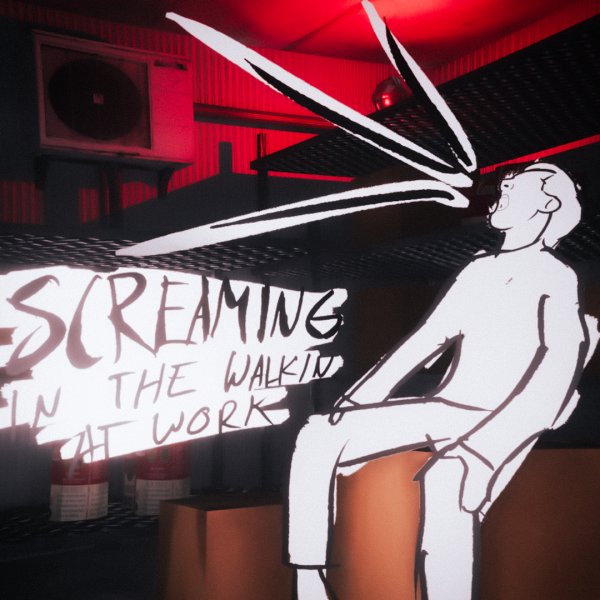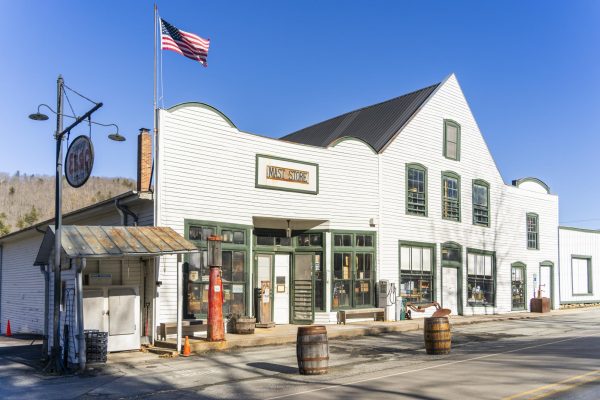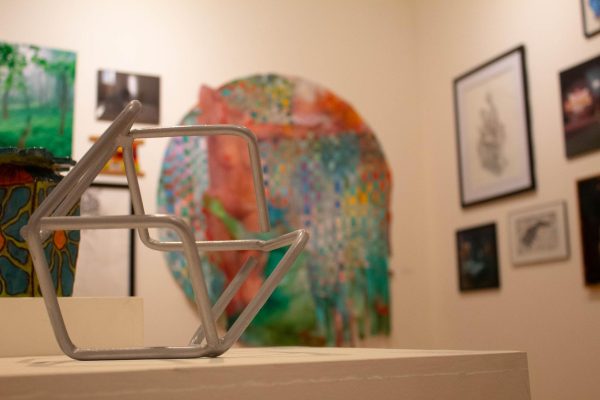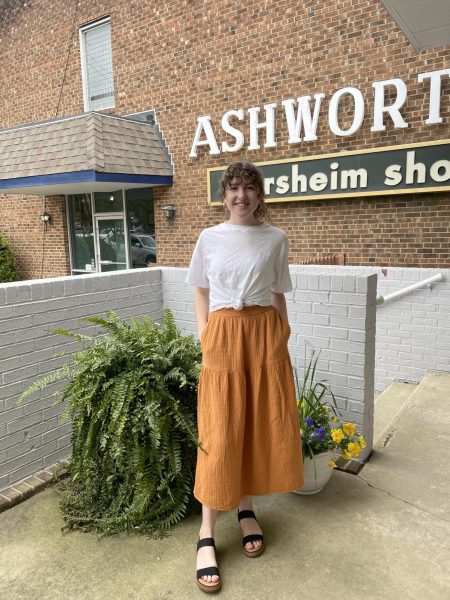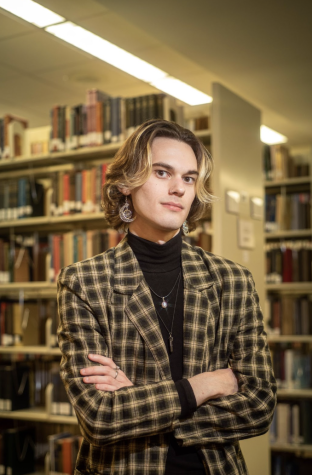Tucked away beneath the stairs, a lecture room held a large crowd facing four professors, surrounded by digitally displayed artwork. Colorful, complex pieces captured the audience’s attention until one of the professors stood up. A hush fell over the crowd, and the seminar began.
The Turchin Center for the Visual Arts hosted the High Country Humanities in a public seminar about artist Marc Chagall and the ways in which he presented “shtetl,” or “little town” in Yiddish, in his artwork.
The four App State professors, Lorraine Affourtit, Michael Behrent, Darci Gardner and Chris Patti, came together to present the public with a deeper dive into Chagall’s art, culture, history, influences and religion.
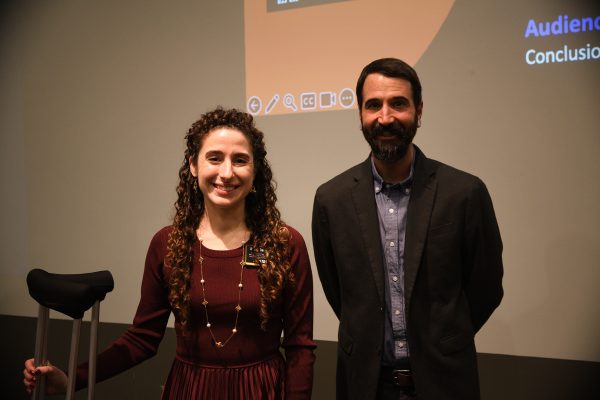
Gardner, associate professor of French at App State, explained the reason for the seminar.
“We were looking for an event where we could feature the expertise of App State faculty in a number of humanities disciplines, and Marc Chagall’s work really lends itself to historical interpretation, cultural and linguistic interpretation, and aesthetic interpretation,” she said. “So there were just a number of different approaches that we were able to tackle with this topic.”
Gardner shared a biographical overview of Chagall’s life. He was born in 1887, in Vitebsk, Russia, where he spent all of his early years. Around adulthood, he went to Paris and spent the majority of his life painting there.
He lived through both of the great world wars, but due to his Jewish identity, he was forced to move around during wartime. While WWI was happening, he went back to Russia from France and during WWII, he spent seven years in New York City.
Gardner shared that Chagall used cubism, an art form that allows for multiple perspectives, in order to fuse his perspectives of his past and present. Many paintings included the Eiffel Tower, a nod to where he was living at the time, and a shtetl, recognized by its green roof, as a nod to Vitebsk, his place of birth.
Behrent, a European and modern French history professor, said that shtetls were a site of memory for European Jews and held cultural significance that helped shape Jewish identities.
“In the 1890s, it was already being commemorated in a retrospective fashion by a Russian-Jewish writer named Sholom Aleichem in a work called ‘Tevye and the Dairyman’ in 1894. This later became ‘Fiddler on the Roof,’” Behrent said.
He shared that this musical showed how shtetls worked as sites of memories because it embodied a community of Jews in a shtetl in 19th-century Russia, a community that was poor, religious, tradition-bound, communal and oppressed.
In the same way, Behrent said Chagall’s artwork is seen as a commemoration of shtetl work, helping to shape the memory and identity of Jews.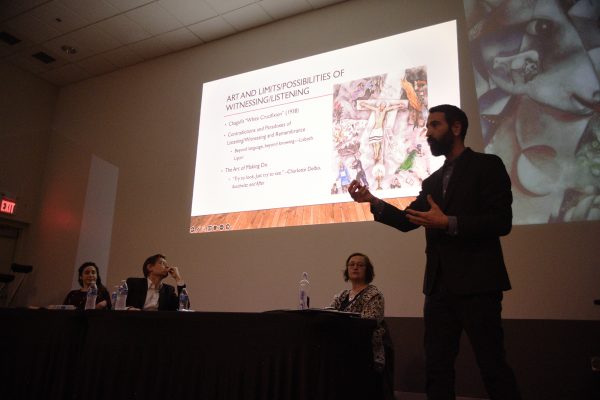
Amy Hudnall was a coordinator for the event and interim director for Judaic, Holocaust, and Peace Studies at the Turchin Center. She was excited that others outside of the center were creating an event like this for the first time and presenting work that was relevant and connected to what they do at the center.
Having taught about shtetls herself, she was curious about what that would look like in Chagall’s work and what the faculty at App State had to say about it.
“I had no idea that Chagall was as interesting as he is and that the symbolism in his work was so connected to things that I live with every day, in terms of Judaism and the historical influence of shtetls. I never really understood his work until now,” Hudnall said.
Many of the event’s attendees were familiar with Chagall’s art and were brought there by a desire to gain a deeper understanding of his work.
Jillian Bonds, a junior communication sciences and disorders major with a German minor, said she was initially drawn to the event because she was interested in the artist’s backstory, such as how he went from Russia to France to the U.S., because she has a background in learning languages and loves to hear about people’s journeys.
“I would love to go to more events like that, especially since I’m somebody who doesn’t have an art background, so it was encouraging to go in with no knowledge and be able to learn and understand more about an artist’s work,” Bonds said.
The High Country Humanities will be hosting more events like this, such as “From West Africa to Appalachia: Expert Insights and Demos with Music and Dance” Feb. 15 from 6:30-7:45 p.m. This event will take place in the Rosen Concert Hall inside Broyhill Music Center.



